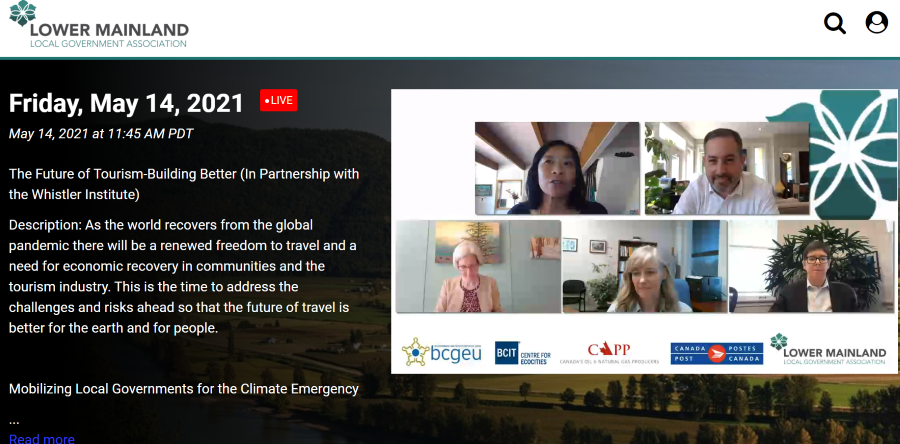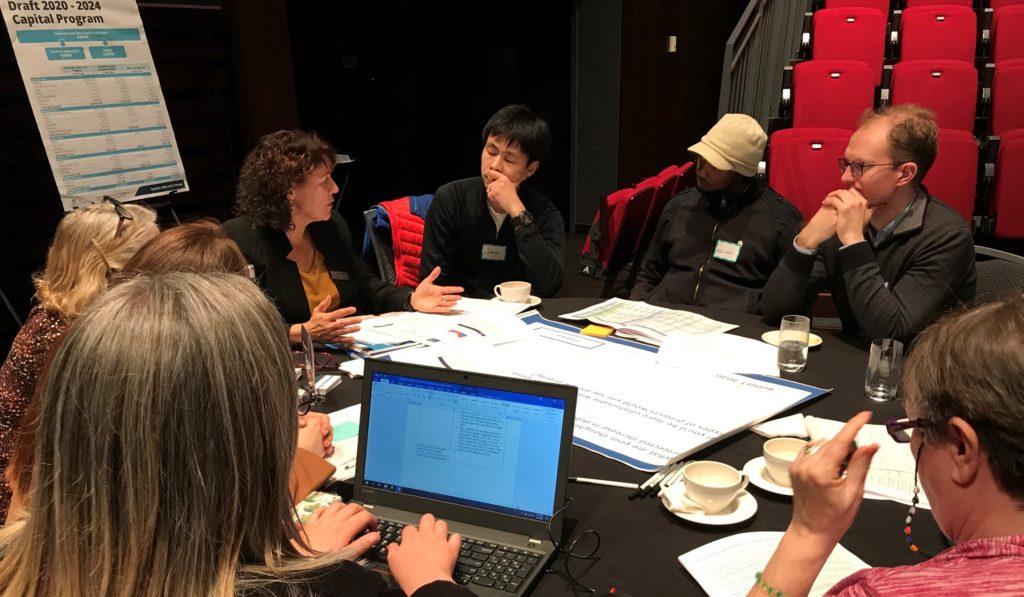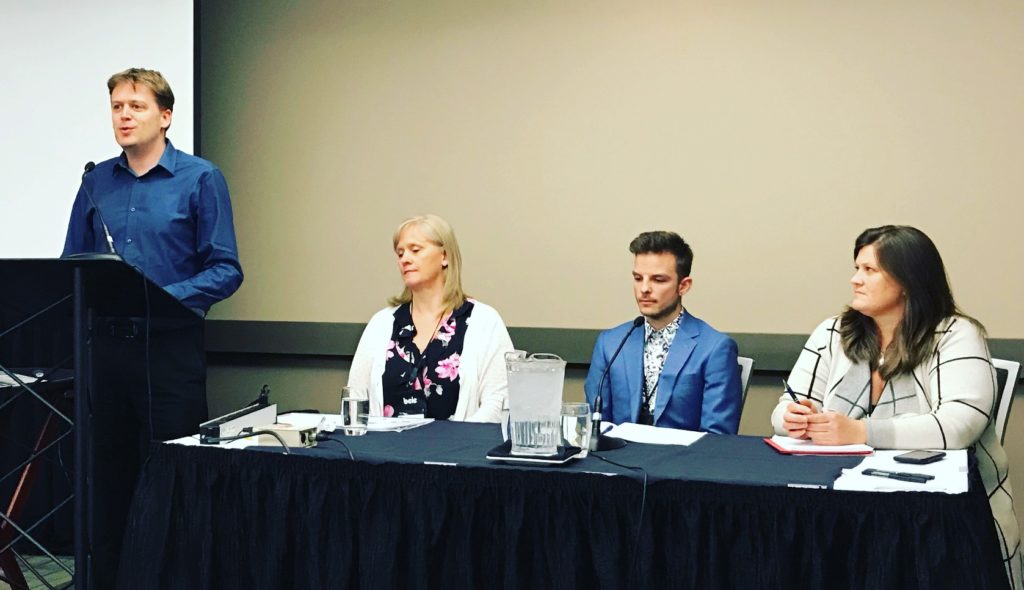Last week was the annual Lower Mainland LGA conference and AGM. It was all (alas) virtual this year, but it was still a great event. As a VP of the Lower Mainland LGA, I’m completely unbiased, and am going to use my platform to talk about how great it was, and to lament how I miss my friends and even a few of my enemies.
The Lower Mainland Local Government Association grew under the umbrella of the Union of BC Municipalities, and along with 4 other local government associations in BC, we work to bring local government leaders together for networking and education, to discuss topics important to local governments, and to lobby senior governments through a “resolutions” process on issues impacting our work.
Our 2021 conference was on-line, and as such the networking part was suboptimal, but we did have great educational sessions and a resolutions session. The theme for the conference was, perhaps optimistically, “the work ahead”. As we started developing that 6 months ago, we recognized that everything has been about COVID for the last year, and hoping we would be on the wane of the Pandemic, we wanted to concentrate on the most pressing needs for local government in the post-COVID world, and perhaps use the lessons of COVID to frame how we could address those other crises / urgent issues.
There were four main educational sessions, all with expert panels and Q&A. We were honoured to have Bob Joseph speak on UNDRIP and what it means in a local government perspective. We had panel including public health professionals, drug policy experts, and local government folks talking about the opioid crisis and policy levers local governments can apply to reduce the harm. We had a session in bringing back a better, more sustainable form of tourism, and a session on mobilizing local government action on the Climate Emergency. We also had two pre-recorded sessions on envisioning the Post-Pandemic workplace and priorities in Asset Management – both very “inside baseball”, but really important topics to our crowd. And though much of the program was interactive, we also spent a lot of time looking at panels like this:

This year, we had two “book club” discussions, less formal chats with authors about their new books. I had the opportunity to interview and moderate a discussion with Seth Klein on his book “A Good War: Mobilizing Canada for the Climate Emergency”, and Mayor Jack Crompton of Whistler moderated a discussion with Megan Elper Wood on her book “Sustainable Tourism on a Finite Planet”.
After greetings from the Premier, and a presentation and Q&A from the Minister for Local Government, we had a resolutions session, which for many Lower Mainland LGA members is the highlight of the conference. There were 32 resolutions, and you can read them all here. 30 of those resolutions were endorsed by the membership, some after a bit of debate. The two defeated were a resolution to re-consider the name of British Columbia to a non-colonial name, and a resolution to ask the Province to legislatively provide local governments more flexibility to adjust their local election voting systems (i.e. ranked ballots) to better suit the needs on the ground in each municipality. This last one was pretty divisive, and surprisingly lost on a tie vote(!) which I think (and this is only my opinion) reflects that some saw the resolution as being perhaps too ambiguous in its drafting, opening up local government elections for too much political manipulation. That said, I suspect if we had a proper in-person meeting, this debate (along with the “Renaming BC” one) would have been much more lively and interesting, as there are good ideas in there that are not well summarized in a short resolution.
New Westminster was a sponsor of one Executive Resolution (Help Cities Lead by increasing tools available to local governments in regulating GHG emissions of buildings which I mentioned here) and one membership resolution (Giving regional governments the authority to regulate the sale and use of single-use plastics, which I mentioned here). Both were endorsed by the membership.
And after all that business, I still really miss my Local Government friends from across the region. The virtual conference was interesting and educational, but the chance to sit around a table at breakfast or with beers and talk about what’s new in their community, how they are addressing a familiar issue, their troubles and their successes, is really valuable. There are some dedicated, serious leaders in our region, from Chilliwack to Squamish to Delta, and I learn from them every time we meet. Here’s looking forward to 2022, when we will have hopefully truly put COVID behind us.













